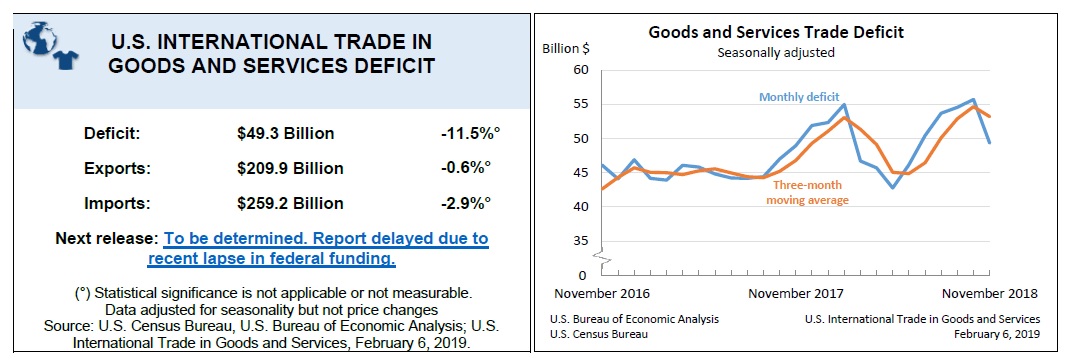US Deficit Narrows, Trump Scores Against China
 As storm clouds continue to gather over the presidency of Donald Trump, new data released by the US government on Wednesday provided a rare moment of relief, with news that the country’s trade deficit has shrunk with imports falling faster than exports. Figures released by the Department of Commerce show that the difference between exports and imports fell from $55.7 billion in October by 11.5% to $49.3 billion.
As storm clouds continue to gather over the presidency of Donald Trump, new data released by the US government on Wednesday provided a rare moment of relief, with news that the country’s trade deficit has shrunk with imports falling faster than exports. Figures released by the Department of Commerce show that the difference between exports and imports fell from $55.7 billion in October by 11.5% to $49.3 billion.
This fall is mainly due to a decrease in consumer goods imports. Although a drop in this magnitude would normally be a cause for concern, since it means a drop in domestic demand, the data also show that the drop was preceded by a five-month increase in imports, which experts attribute to sellers who stock products due to fears about the escalation of the ongoing trade war between the United States and China.
Trump’s tariffs alone are, of course, not the only reason for the reduced import figures. Lower global prices for imports of crude oil and oil are also responsible for a deficit that is lower than expected. Imports of crude oil were $23.1 billion compared to experts’ forecast $41.8 billion.
US oil-based exports boomed, rising by 5.4 percent, leading to a US oil deficit of $11.4 billion -a 25 percent reduction, the lowest deficit in the last 11 years. Trump will definitely take credit for the reduced deficit, however, with the Department of Commerce eager to point out that the president’s insistence on re-balanced trade agreements has achieved its intended objective.
Although the Department has a history of issuing politically motivated communication, including a recent study to discredit man-made climate change, the figures certainly make it compelling to read.
MUFG Chief economist Chris Rupkey said:
“The sharp slowdown may reflect increasing caution given the unpredictable outcome of the administration’s current trade talks, the good news is this will temporarily boost real GDP in the fourth quarter.”

In an effort to reduce the gap between imports and exports, the Trump administration embarked on a rise in tariffs, which saw new charges slammed on a number of items from some of its largest trading partners, including a 25 percent tax on steel and a 10 percent tax on aluminum. The new tariff regimes’ most visible outcome was a series of tit-for-tat movements by the US and China, as trade talks between the two countries continue.
Mainstream economists generally agree that Trump’s trade policies will not reduce the country’s trade deficit, as Americans do not produce as much as they buy, but Trump -who ran for office on a campaign to reduce the deficit -thinks otherwise. To this end, his approach has so far led to what appears to the casual observer to be a series of seemingly pointless and possibly unsuccessful struggles pursuing a protectionist economic agenda “America First.”






